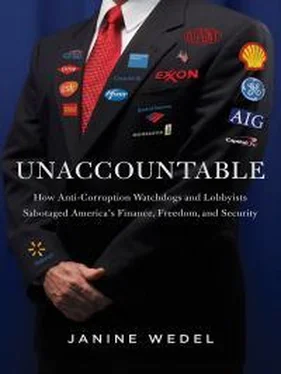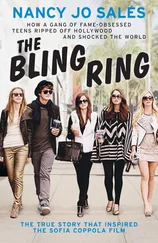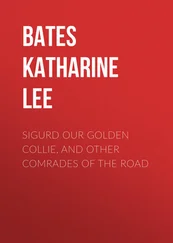Think of this new world of media/Internet as a sort of privatization, or personalization. I don’t mean consolidation of the media—that it has become more concentrated in the hands of fewer owners (although this, too, is a crucial recent change 4). I mean rather how our ever-growing access to “information” (and entertainment) is billed as a more efficient way of getting something, a better deal for everyone, by eliminating layers of middlemen. But like the privatization in other areas that I’ve studied over the years, this privatization has grave consequences for accountability, especially now in the shadow-elite era. For in personalizing the media, we have depleted it of uniform standards, like, say, fact-checking, and eroded the capacity for accountability. Think about it: our online “likes” and those pages we choose to “follow” are personal choices. That, by definition, exempts them from public accountability.
All the while, our personal/private choices in the collective would seem to guide how the news is shaped—indeed, what even becomes news. Success is assessed instantaneously through the number of “likes” on a blog post, views of a Web page, hits on YouTube, or number of followers or retweets on Twitter. What is deemed newsworthy is modulated through our collective media choices. How can we even think of accountability in such a personalized system?
And yet, how can we not? We are at the mercy of our ignorance. If we do not pay heed, it will come back to haunt us in ways that affect our daily lives and livelihoods—in forms we may not yet even imagine.
LOOKS LIKE NEWS
The search for authenticity—and truth—is reminiscent to me (and other scholars) of late communism in the Soviet Union and Eastern Bloc. Given the different contexts, this may seem jarring, but bear with me. In the West, this search follows a period of upheaval in the media. Many Americans (and people more widely)—no matter their political stripe—feel intuitively that there is a stark disconnect between what they experience as reality and what the dominant news presents as reality.
Mainstream news comes across as not-quite-real; in fact, it comes across as performed by both the media presenters and the newsmakers they cover. That is why so many Americans look to fake news—comedians Jon Stewart and Stephen Colbert are cases in point—because they tell it more like it is than does the so-called news. In short, these performers are more authentic, more believable, and, ironically, no more performed than the evening news on any major network. (Colbert’s enacting a caricatured conservative is intended to be understood as performance, while the newscaster is not.)
Anthropologists Dominic Boyer and Alexei Yurchak have observed this as well—and saw, as I did, a similarity between the public propaganda of late-communist societies and the mainstream media of today in the West. News messaging has become strikingly standardized and formulaic, despite the seemingly infinite choices of media outlets. 5
Boyer and Yurchak cite the “endless figures, numbers, charts, soundbites, [and] talking points . . . repeated from network to network and from one context to the next.” 6While you might think that digital media could offer a quick escape from that echo chamber, these scholars see “an increased tendency toward imitation” by journalists strapped for time, which means that much of the “news” we see online features more of the same talking points. Stewart’s Daily Show in particular revels in displaying this trend: 7
According to Stewart, a central function in much of U.S. news media has shifted from informing the public to performing what he calls, [ sic ] scripted “political theater.” By this, he means that addressing important social and political issues[,] news media tends to use the language dominated by predictable, fixed, and repeated scripts and rhetoric, paying less attention to the discussion of substantive political issues and their meanings. 8
The anthropologists also mention the equal-opportunity-offender program South Park , which, perhaps more than nearly any other current satire show, aims its daggers at pieties right, left, and center. It is a show in which, as Boyer and Yurchak say, “everything is corrupt, deformed and hypocritical” and, by the way, in 2014 drew at least a half million more viewers weekly than either the Daily Show or the Colbert Report . 9
Of course, the media are conveying what newsmakers deliver, in what the scholars call an “insular . . . [and] professional performance culture.” 10Just as journalists are spread thin across so many venues, newsmakers themselves know that they have to present compelling “theater” just to get attention in a fractured news environment.
This performance culture seems to have caused regular people to turn to parody in search of something more authentic—something I saw in my years in Eastern Europe during late communism. 11As we’ve said, the emerging distrust in the West of official news has also pushed citizens to a more personalized, “privatized” kind of content, taking their cues from family, friends, and like-minded “friends” and “followers” in social media.
How can this be? There is nothing in the democratic West like a centralized Politburo department of propaganda that must approve the news or orchestrate “newsworthiness.” Boyer and Yurchak point to what we will examine in depth in this chapter: extraordinary changes that have upended the media business in the West, mostly because of the pressures brought to bear by the emergence of the Internet. 12
Something that looks like news has now substantially replaced the real thing. This medium is a simulacrum of what it used to be, as French philosopher Jean Baudrillard (1929–2007) might have said. He argued that today’s society is constructed around simulacra, which (then) become reality. Simulation produces real intuitive feelings, emotions, or symptoms in someone and blurs the difference between the “real” and the “imaginary.” As we shall see, many websites (or newscasts) of corporations, think tanks, and even presidential candidates are designed to resemble news sites.
We want this simulacrum of the news (substituting for the real thing) to come to us via people with whom we are acquainted. Today we tend to trust only people we know (or feel we know or have a connection to). Tellingly, this recalls what I experienced under communism in 1980s Poland—where your closest friends and family were your bulwark against all-powerful authorities. Reliable institutional arbiters were few and far between. Virtually no one trusted official sources (and for good reason).
Today in the West we, too, increasingly eschew institutional arbiters in favor of ourselves and our own. Just like the consumer of porn who has rendered the central middleman redundant, we are assembling our news ourselves. This is possible because more and more people are getting all their news online, increasingly on the fly through smartphones and tablets. According to the Pew Research Center, a public-opinion-research think tank, “a majority of Americans” surveyed in the United States in 2012 got their daily news through digital means. 13Online news consumption has surpassed radio and newspapers. In fact, in less than a decade it has more than doubled. In late 2013, the Pew Center found that sixty-four percent of Americans use Facebook, with half getting news there. That amounts to thirty percent of the general population; for YouTube it’s about ten percent getting news there, and for Twitter eight percent. 14
Thus we are increasingly self-assembling our media playlist—an app on our phone, a posting from a Facebook friend, an inspiring tweet or YouTube clip from an admired politician—all of them now “news” providers (or news editors, when they select stories and send them our way) alongside Uncle Gary’s fly-fishing experience recounted at a family gathering, then “shared” for “friends” on social media. Squarely in the driver’s seat, we believe we are in control. 15
Читать дальше












